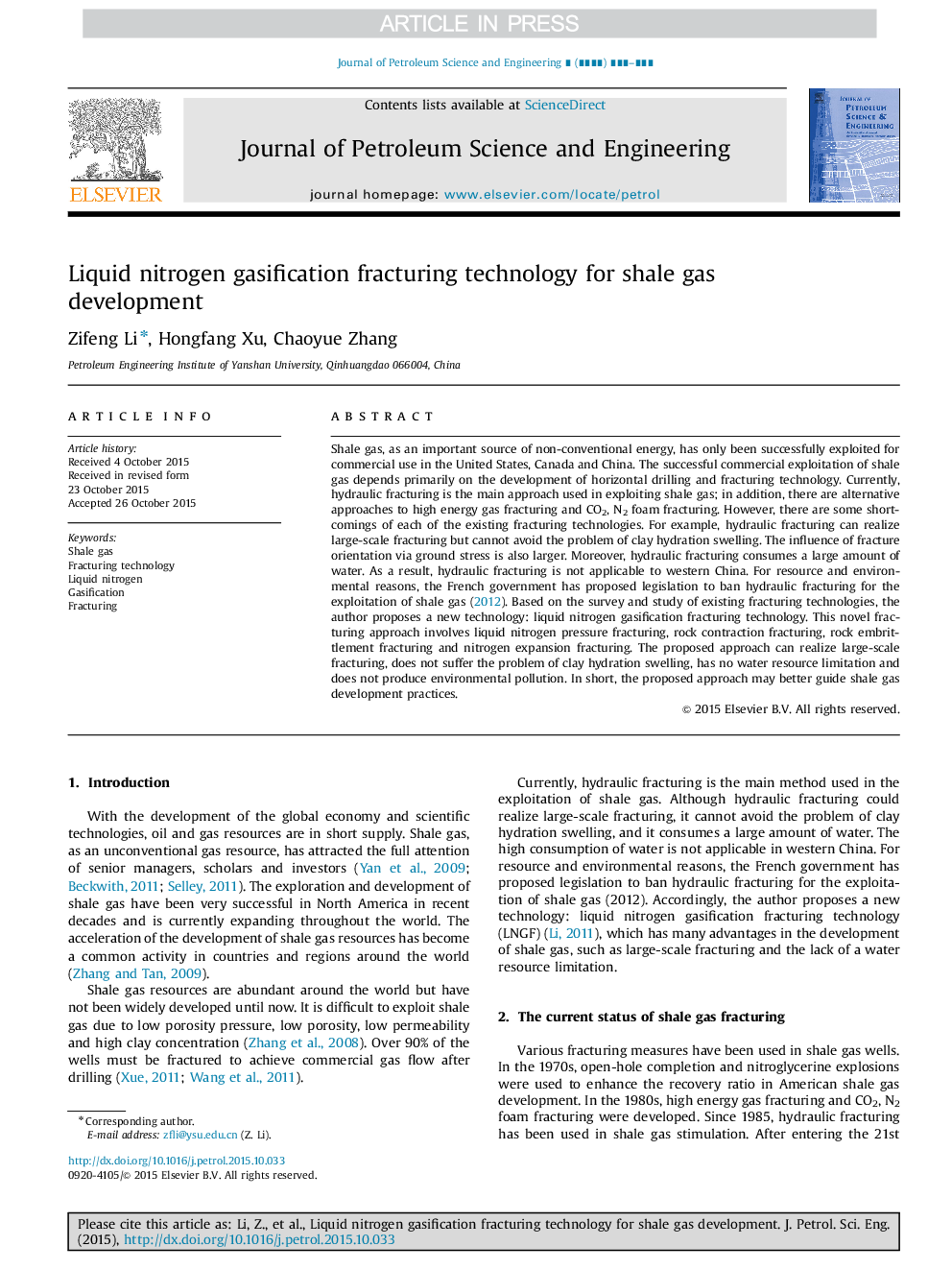| Article ID | Journal | Published Year | Pages | File Type |
|---|---|---|---|---|
| 8126295 | Journal of Petroleum Science and Engineering | 2016 | 4 Pages |
Abstract
Shale gas, as an important source of non-conventional energy, has only been successfully exploited for commercial use in the United States, Canada and China. The successful commercial exploitation of shale gas depends primarily on the development of horizontal drilling and fracturing technology. Currently, hydraulic fracturing is the main approach used in exploiting shale gas; in addition, there are alternative approaches to high energy gas fracturing and CO2, N2 foam fracturing. However, there are some shortcomings of each of the existing fracturing technologies. For example, hydraulic fracturing can realize large-scale fracturing but cannot avoid the problem of clay hydration swelling. The influence of fracture orientation via ground stress is also larger. Moreover, hydraulic fracturing consumes a large amount of water. As a result, hydraulic fracturing is not applicable to western China. For resource and environmental reasons, the French government has proposed legislation to ban hydraulic fracturing for the exploitation of shale gas (2012). Based on the survey and study of existing fracturing technologies, the author proposes a new technology: liquid nitrogen gasification fracturing technology. This novel fracturing approach involves liquid nitrogen pressure fracturing, rock contraction fracturing, rock embrittlement fracturing and nitrogen expansion fracturing. The proposed approach can realize large-scale fracturing, does not suffer the problem of clay hydration swelling, has no water resource limitation and does not produce environmental pollution. In short, the proposed approach may better guide shale gas development practices.
Related Topics
Physical Sciences and Engineering
Earth and Planetary Sciences
Economic Geology
Authors
Zifeng Li, Hongfang Xu, Chaoyue Zhang,
